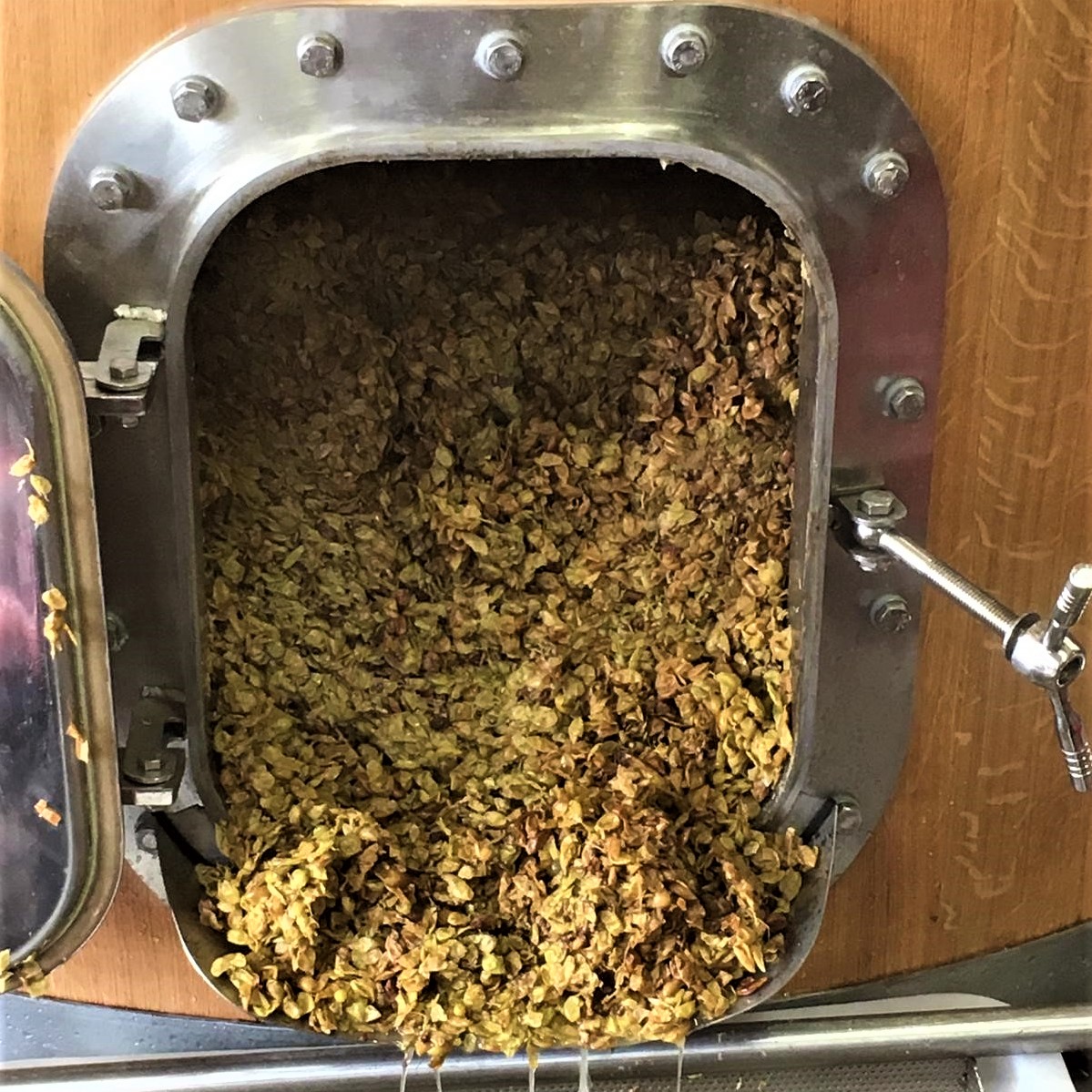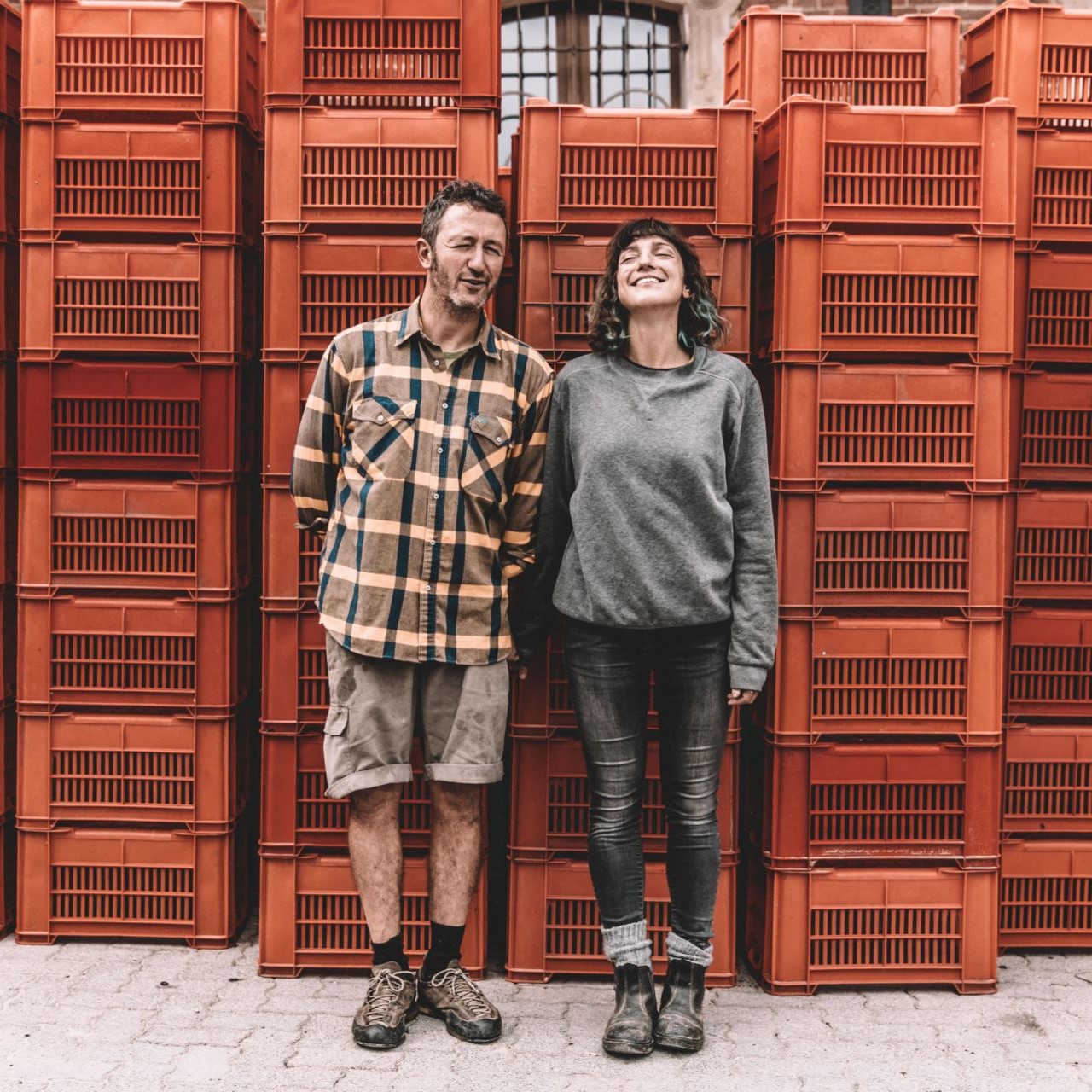Grower: VALFACCENDA
Date of interview: March 12th, 2021
Reading time: 4 minutes
Below is a recent interview with Luca and Carolina Faccenda of Roero grower Valfaccenda – talking conservative cellar practices, organic farming, and why they care more about Arneis than Nebbiolo - and how their approach to Arneis offers a true expression, in contrast to nearly all others that are based on a simple, homogenized style.
With a small group of like-minded growers, Valfaccenda is leading Roero into a new age where its uniqueness relative to The Langhe is celebrated. Techniques such as whole cluster fermentation, modest skin contact for Arneis, and pressing via wooden basket turn heads for the purist, salt of the earth approach - an approach that yields wines of delicate grace and true Roero character.
This interview was slightly shortened for brevity, although the conversational language used used by Luca and Carolina was preserved as much as possible.
Vine Farmer: What is the history of Valfaccenda and how did it all come together? What is your mission and what is unique about the work that you do?
Carolina: In 2010, Luca was a wine consultant and enologist, and he always had this dream to have his own wine. That year, small pieces of the vineyards in front of our house came back to us after years of being rented by our neighbor. When we started with these reclaimed vineyards, we basically disagreed with almost all the other expressions of Arneis that there were at the time…probably we were a little bit arrogant, I don’t know. But we thought, ok, we think we can do something better with this grape. Let’s try to be more sensitive to the vines and variety, which is basically what nobody else would do.
Because, you know, we are in Piedmont, which is a total, absolutely, red wine region. And Arneis had this generic style and expectation in the last 30, 40 years, as a simple and easy wine. The wines were super technical – very fresh and aromatic, made using selected yeast fermented cold to bring out these qualities. Like an aperitif wine. The result was basically a “white wine” – it could be Trebbiano, Vermentino, or Arneis….it all tastes the same. As I said, we disagreed a little bit with this. And so, I think that Arneis is probably our bigger focus. We have Nebbiolo too, and we are very lucky because everything is easier with Nebbiolo, because its, well, Nebbiolo. With Arneis we have to struggle a little bit because we need to try to have the best interpretation of this variety. With Nebbiolo there are hundreds of years of history working with the grape.
Vine Farmer: I'd love to hear a bit more about Arneis - how was it viewed historically and what is the modern day consensus?
Luca: Arneis, as Carolina stated, really has been treated as just a “white wine”. Where the reds need two or three years of aging, it was advantageous for cash flow to have an easy white wine to put on the market quickly. Our idea from the beginning in 2010 was to work to truly express our terroir for both varieties. Nebbiolo is the first to sprout in the spring and the last to harvest, which is naturally very interesting for terroir expression and fine wine. Even so, the Arneis cannot just be something technical, easy, and fresh, made with selected yeast and cold fermentation.
Carolina: Locally, with the much older generation (grandparents), Arneis was called “white Nebbiolo”, which is interesting because it suggests something much more than most present day expressions give. They didn’t give Arneis that name randomly. Arneis grapes do have small berries as Nebbiolo does, but in a larger sense, the name suggests it is capable of something much more serious and noble.
Luca: In the winery, when we do a tasting, we start with Vindabeive because it is the easiest wine that we do. We next taste the two Roero Nebbiolo wines and always end with Arneis. This is not always considered "correct", but it makes sense for our soil. Nebbiolo from our land tends to be more in the nose and Arneis is more on the palate. I say it’s not "correct" because Nebbiolo does have a lot of tannin and you do feel it in the mouth, but somehow the Arneis is still more centered around the palate and texture, if that makes sense. It seems counterintuitive.
We are not pioneers by doing it this way, although it is unique. Arneis and Nebbiolo have been here for a thousand years. We just changed, if you want, a little bit, the point of view of the Arneis. Arneis can be strong in the mouth and a little bit salty even, and the nose needs some time. It took many years and a lot of trial in the vineyard and cellar to find the right expression of our vineyards. In the past, our use of maceration was a little bit more. But we found that some of the nose can be lost with too much skin maceration. I think that with the 2019 Bianco, I’m quite happy. However, it really took 10 years of our work to get here.
Carolina: If I have to choose a wine to drink, I probably say Nebbiolo. But if I have to choose which wine I care more about, it is the Arneis. We were at least a little bit revolutionary in the approach. Also, in the beginning of Valfaccenda, for the first three or four years, we did have other jobs. We were not relying on Valfaccenda economically... This allowed us true freedom to take risks in achieving the truest expression of our land without needing to worry about the economics of our wine in the market.
Vine Farmer: In concluding that everyone else was not making true Arneis, what other clues or factors helped you arrive at that conclusion? What specific techniques do you use to achieve an expression that you regard as true?
Luca: Not just one thing, many things. One thing was when I was at University for my master’s degree, one oenology class was talking about stabilizing the color of Nebbiolo. One technique was using skin and seeds from Arneis because the polyphenol level of Arneis was much bigger, even compared to Barbera. This technique unfortunately taught to use an inherent aspect of Arneis to modify an inherent aspect of another grape!
The modern way to make Arneis completely ignores this fundamental truth (the high polyphenol content) of the Arneis. Tannin is removed from the Arneis and replaced with residual sugar, which the market enjoys. When you have sugar, you do not feel the salt and the tannins of the wine.
I also worked a little bit with Mario Roagna from Cascina Val Del Prete in 2008 where they were experimenting a lot with macerated Arneis and biodynamic farming. We were both a little bit bored with the narrative of Roero being about finessed and elegant Nebbiolo and “generic” white wine. We knew the Arneis was something more and could see it in the results of Cascina Val Del Prete’s “Bizzarro” Arneis.
More than ten years ago, the Arneis was only planted where Nebbiolo or Barbera were not best suited. Now this is changing a little bit. There are others trying to make Arneis that is more accurate. We’ve tasted some really good old Arneis and our thought was that 90% are on the market too early and they were really just alcohol, water and acid, even when made in an honest way. The same wines after 2 years improved significantly. And so time is an important factor for a great expression of true Arneis.
Since 2014, all our Arneis goes through malolactic naturally, which we think makes a more complete expression.
Vine Farmer: What is your philosophy on farming? What type of farming do you do any why? How has it changed over time?
Luca: Since we started, our ideas have not changed. We started as organic and got certified in 2014. We don’t put the stamp on the label through. Some of our neighbors are not organic and we sadly need to discard the grapes that border their vines. Within the next 5 years we may get the winery certified organic. The vineyards take years to certify but the winery will only take 2 weeks for the certifying body to confirm. In the past, some people would say “oh Valfaccenda is good because its organic”. For us, we want people to know Valfaccenda is good because the wines are good. Being organic comes as a secondary reason. Organic is certainly ethical and we spend a lot of time in the vineyard and don’t want to smell poison. Recently, some pesticides and herbicides have been banned in Roero by the consorzio, which is a great step forward. We practice organics for ourselves and for our land expression. It's important for us to work in a manner that if our children want to carry on the work, they can.
Also, our land is so complex, we work in a customized way even within sub parcels of vineyards. We work in a very precise manner - we pay a lot of attention during the season to be able to do a number of harvests between plots in the same vineyard, for instance.
Vine Farmer: What is your cellar philosophy?
Luca: This is much easier to explain. We practice conservative winemaking. We do not add, we do not takeout. We prefer to have slow macerations and favor using varying percentages of whole bunches during fermentation.
Valfaccenda Rosso and Valmaggiore Riserva are made in exactly the same way. The point is that if the vineyards are truly different, the independent character of each vineyard comes out in each wine, regardless of winemaking. We don’t over extract because we do not want to fine or filter to take out additional tannin and material. We don’t filter and we allow for malolactic fermentation on every wine.
We don’t use selected yeast because the taste would be a little bit different than what we would get with our indigenous yeast. Even so, this is not a religion to us. When I drink and buy wine I don’t ask if they use selected yeast. If I know the area and grape and feel it in the glass, that is the point. When people drink Valfaccenda in the glass they find first Roero, second the grape, third the harvest and season, and fourth what we do. Or more importantly, what we do not do. You need to be sensitive because taking one more leaf from the vineyard has an impact. Twelve hours of additional maceration has an effect. The big part of the work is to look, listen, and taste.
Vine Farmer: What other wines do you both enjoy drinking? What wines are influential for you?
Luca: Gringolino!
Carolina: Riesling. Not the boring ones, the really good ones!
Luca: Let’s start with Roero.
Carolina: Solo Roero, our partners in our joint project together. Alberto Oggero and Cascina Fornace. We all make completely different wines but the philosophy and history are quite the same. You can taste three different expressions of Arneis and Nebbiolo that are all authentic to the land. For sure Cascina Val Del Prete too. In their area of Roero, it’s the only part where Barbera really excels. Serra de’ Gatti and Carolina…in Priocca there is Barbera with some structure.
Luca: We drink some Barolo and Barbaresco as well. We really enjoy the Verduno area. We always drink Pelaverga! Monvigliero is a lighter expression that we love too. We drink some Burgundy and a lot of Valtellina. Carema too. We are a little bit focused on Nebbiolo, as you see. We love Rossese di Dolceacqua. I think my taste has changed a lot. In the beginning, I was really impressed by the big wines. Now I enjoy wines that are not so clear from the first glass – you need to keep exploring to understand them. There are many more sensations with wines like this; we look for these wines. We are also careful of alcohol level and prefer lower alcohol wines. We try to manage the vineyard to have fully mature Nebbiolo at lower alcohol levels. Too much alcohol is difficult to overcome as a drinker.



